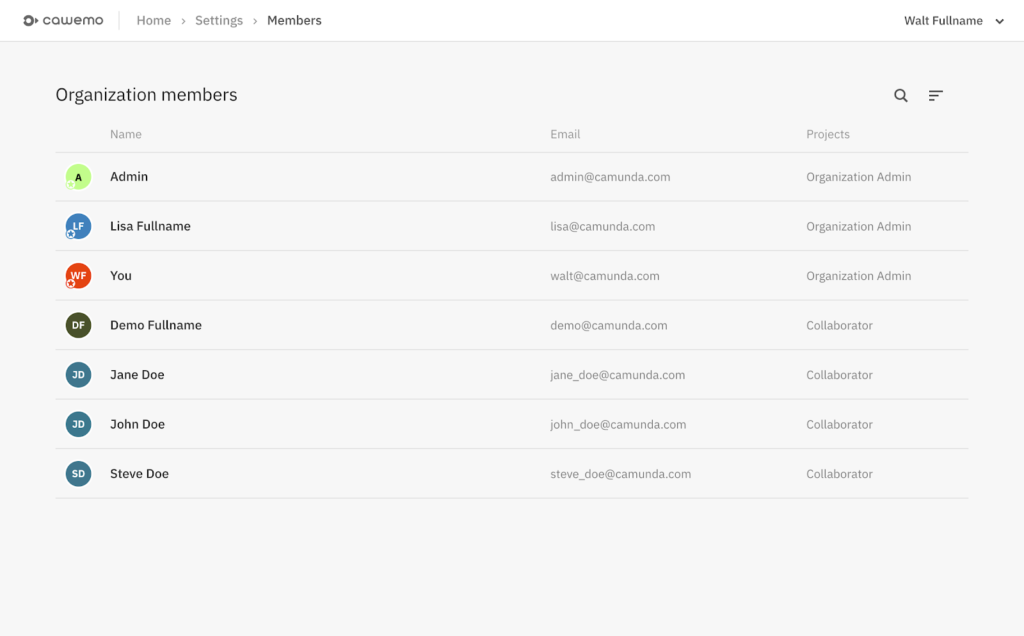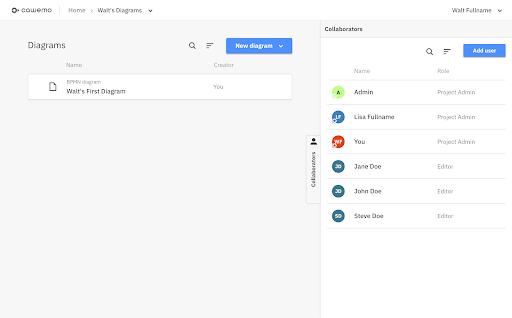We’re happy to announce the 1.6 release of Cawemo Enterprise On-Premises.
Cawemo is the specification platform of the Camunda stack, enabling all stakeholders to model and collaborate on BPMN and DMN diagrams and related files.
The main improvements in this release are:
- DMN Modeling
- Cawemo supports modeling of DMN diagrams in addition to BPMN.
- Enhanced Template Editor
- In addition to UiPath, Cawemo supports templates for Automation Anywhere and External Service Tasks. Additionally, you are able to define BPMN Errors.
- Improved Access Rights Capabilities
- Organizations and projects can have more than one admin now.
- LDAP integration
- You can connect your on-premises installation to an LDAP server.
As a Camunda Enterprise customer, you can install or upgrade to version 1.6 following our On-Premises Installation instructions. On cawemo.com, DMN modeling, improved access rights capabilities and more improvements are already available to you if you are on the Enterprise plan.
DMN Modeling
Users can now model DMN in the same way as BPMN. This means that you can collaborate in real-time while working on a DRD and its Decision Tables or Literal Expressions. To facilitate collaborative DMN modeling even more, Cawemo lets you track progress on DMN files through the milestone history, with the ability to go back to a previous version. And just like BPMN, you can share and embed DMN files in external spaces such as a Wiki or an organizational handbook.

Enhanced Template Editor
In addition to UiPath, you can choose between two more implementation types within the template editor: External Service Task and Automation Anywhere. The former provides a guided starting point for non-RPA use cases while the latter lets you define templates for bots you want to invoke in Automation Anywhere via the RPA Bridge. The new editor provides guidance on which properties are needed for configuring the chosen implementation type.
To make your orchestration implementation more robust, Cawemo also lets you declare errors that can be thrown when the External Service Task or RPA Bridge Task fails for any reason.

In case you are new to RPA orchestration, or would like to know more about how to use the Catalog and Templates, we recommend to read our RPA Orchestration getting started guide.
Improved Access Rights Capabilities
Organizations can have more than one administrator. You can promote registered users to organization admins via our new “Manage Members” page, which offers more space to display and manage your collaborators.

Additionally, projects can also have more than one owner which is why we renamed the role to “Project Admin”. All you have to do for this is to add a user to a project with the “Project Admin” permission, or change the permission of an already collaborating user. Just the same as with Organization Admins, Project Admins are highlighted with a star on their avatar in the collaborator list.

LDAP Integration
Cawemo lets you configure a connection to your company’s LDAP server (including Active Directory). This makes it easier to centrally define who should get access to Cawemo instead of having to maintain separate user databases for your company and Cawemo. When upgrading from a previous version, each account is matched automatically on the user’s first login after LDAP is configured by your organization.
Share your thoughts
We love being in touch with our community!
As a user at https://cawemo.com, you can send us a direct message through the “Provide feedback” form. We are also active in the Camunda forum and on twitter @Camunda.
If you are interested in the Enterprise plan of Cawemo, please reach out to us via the contact form on our website.

